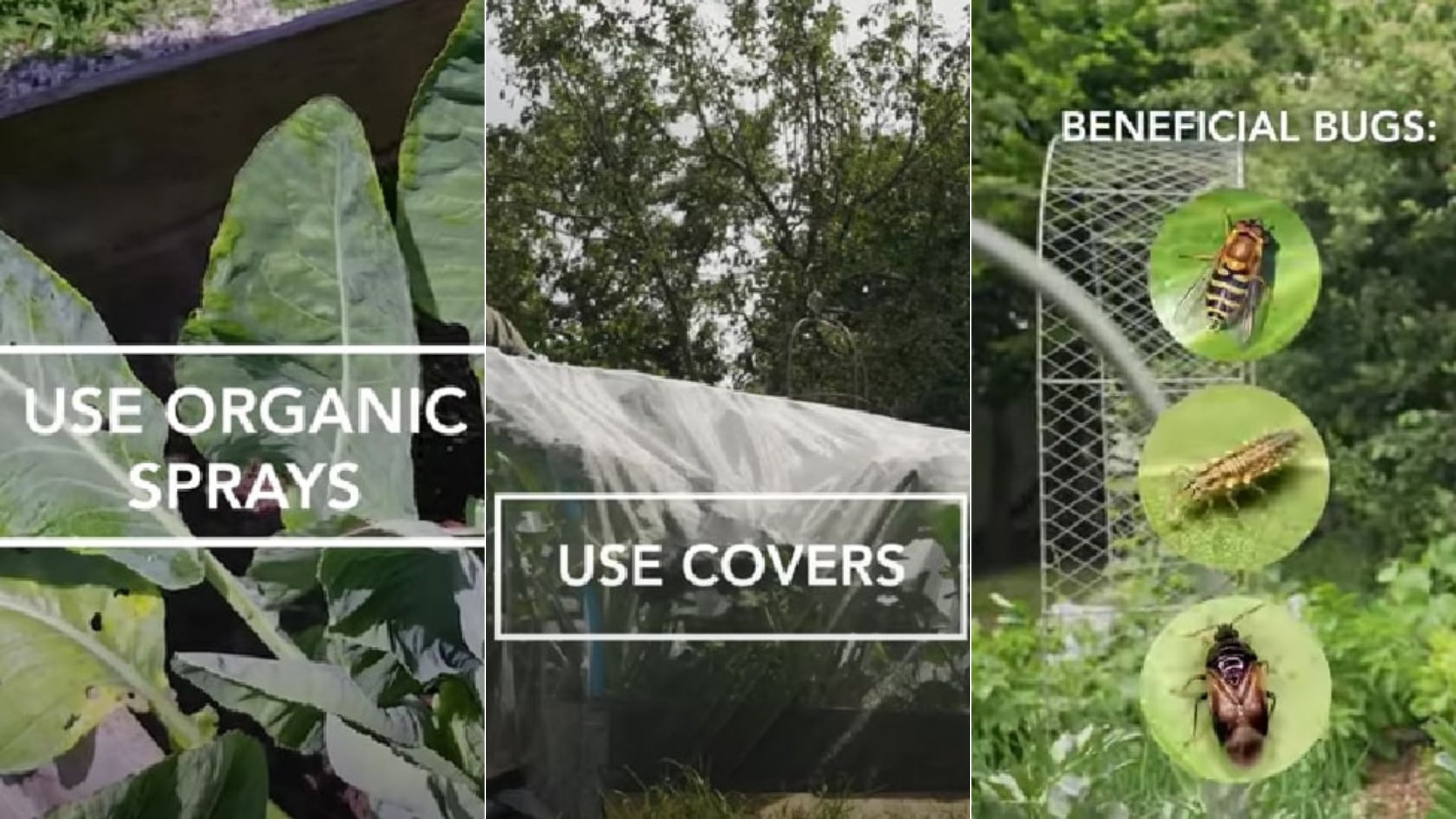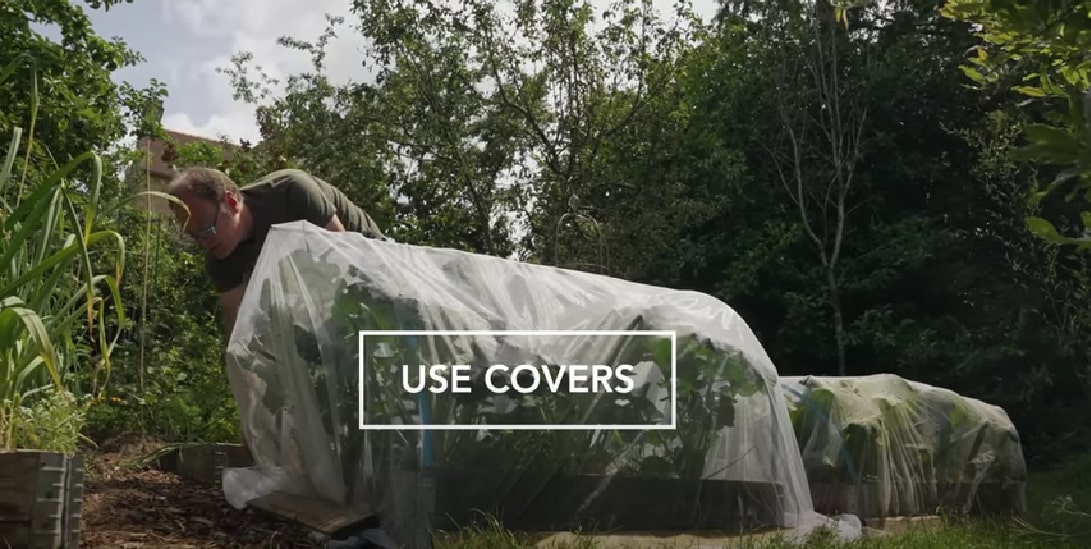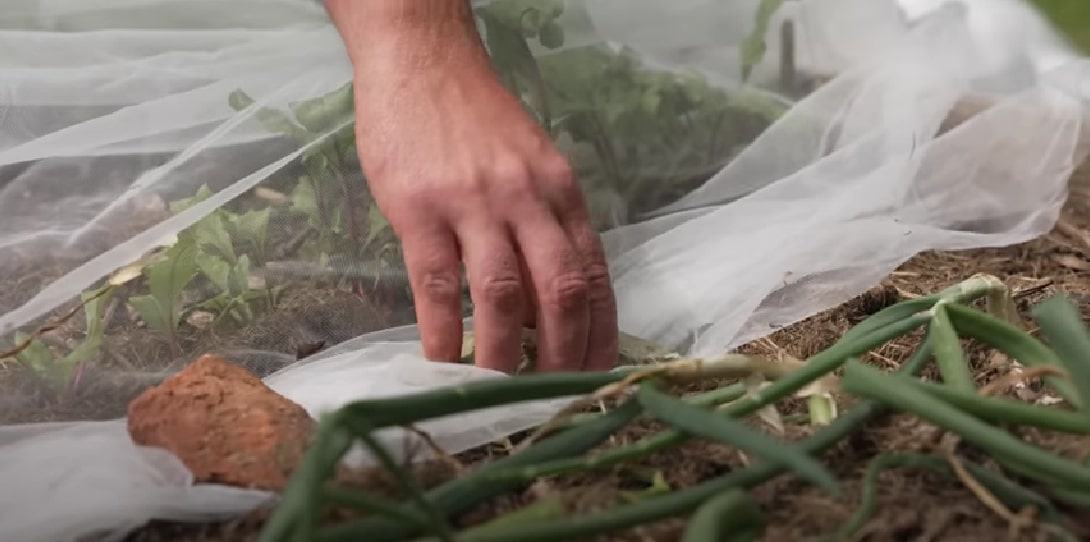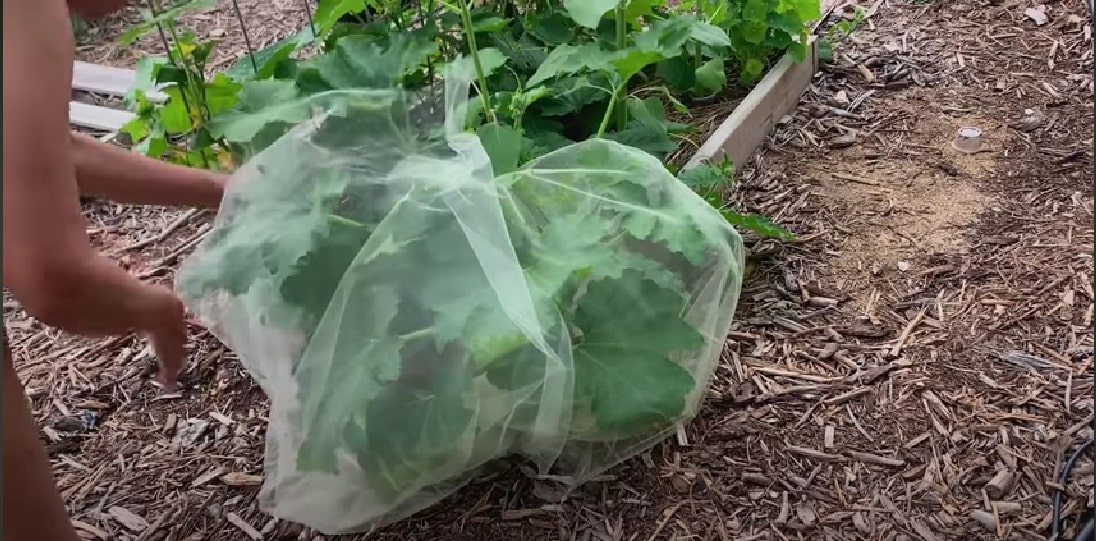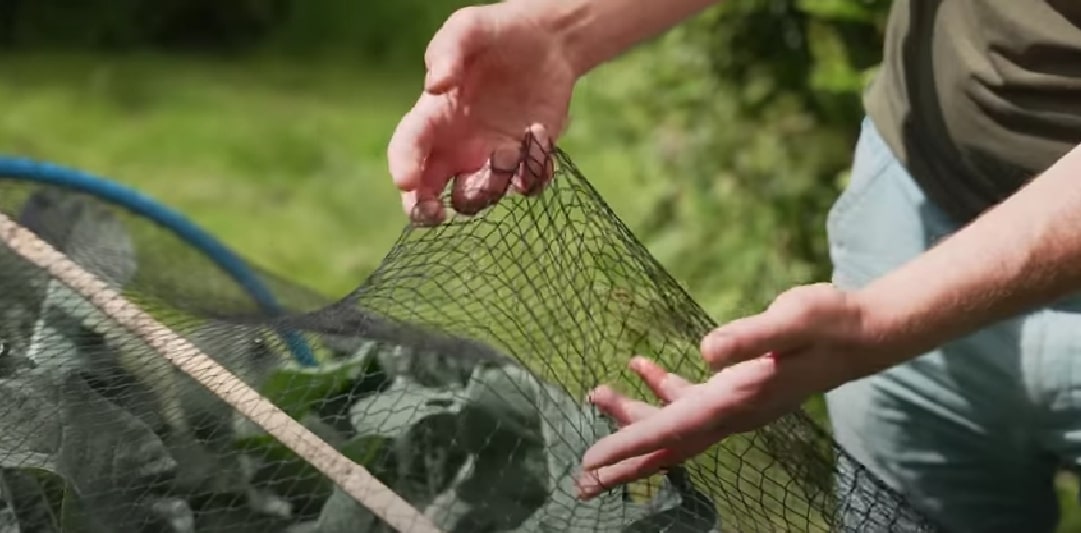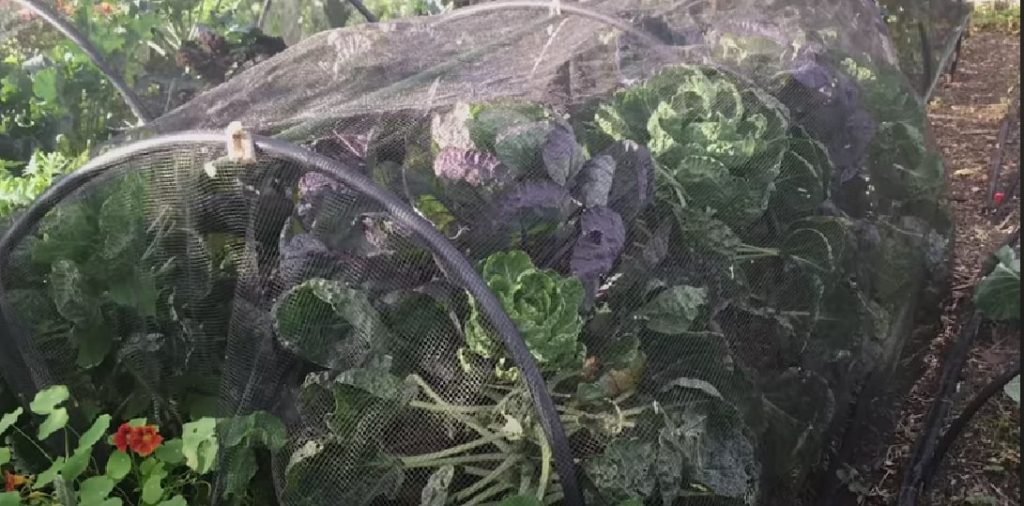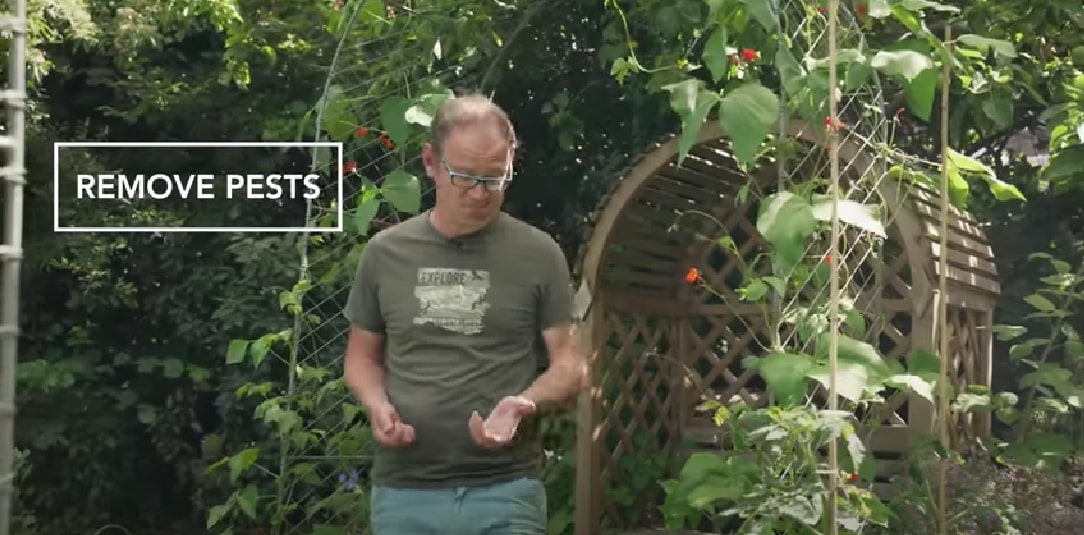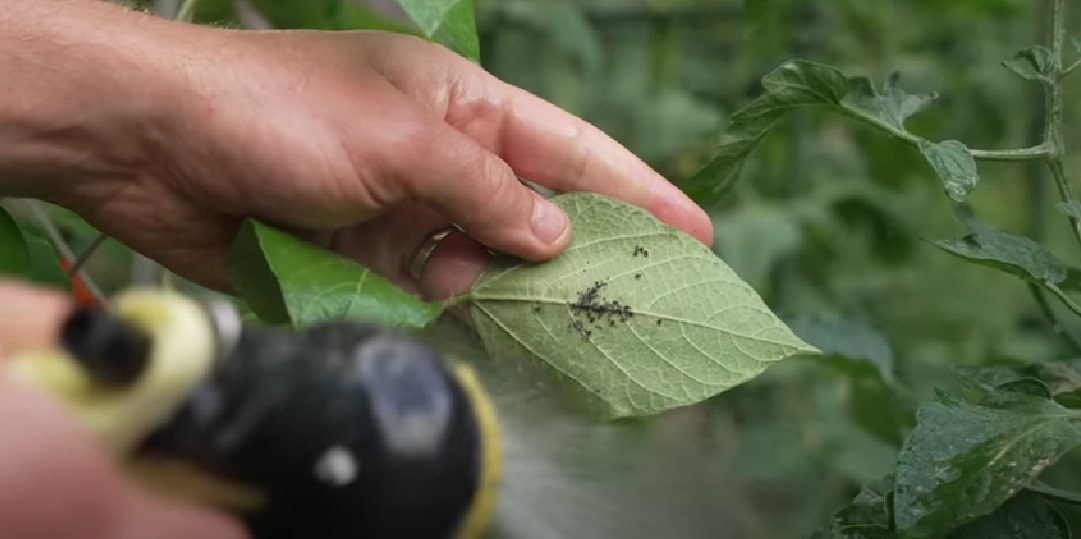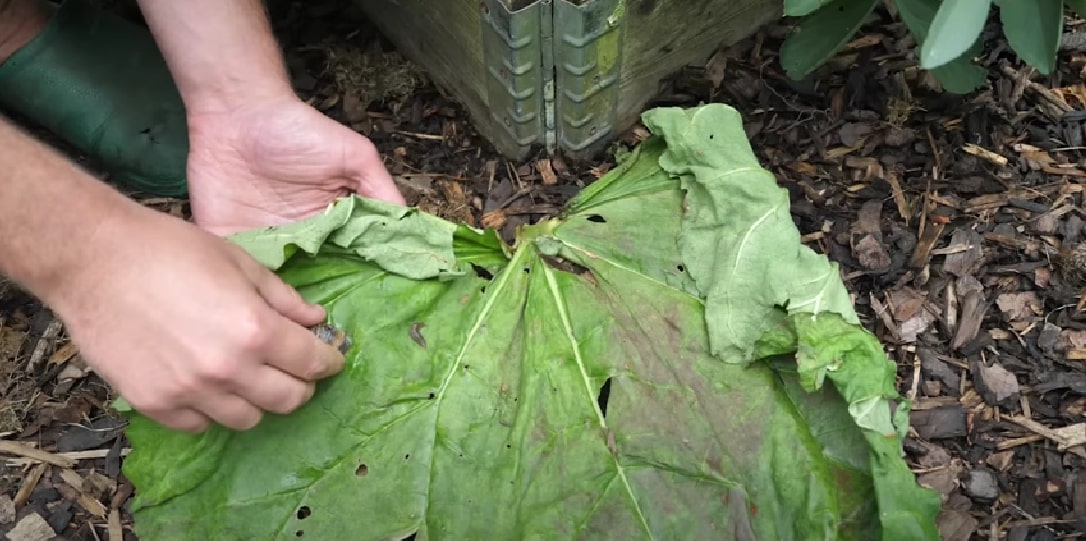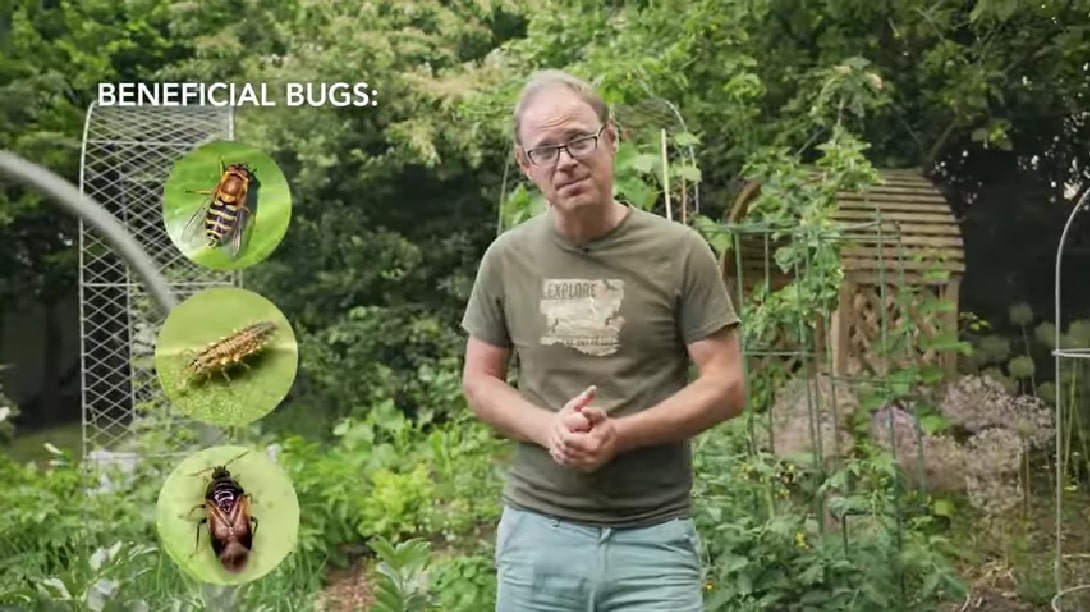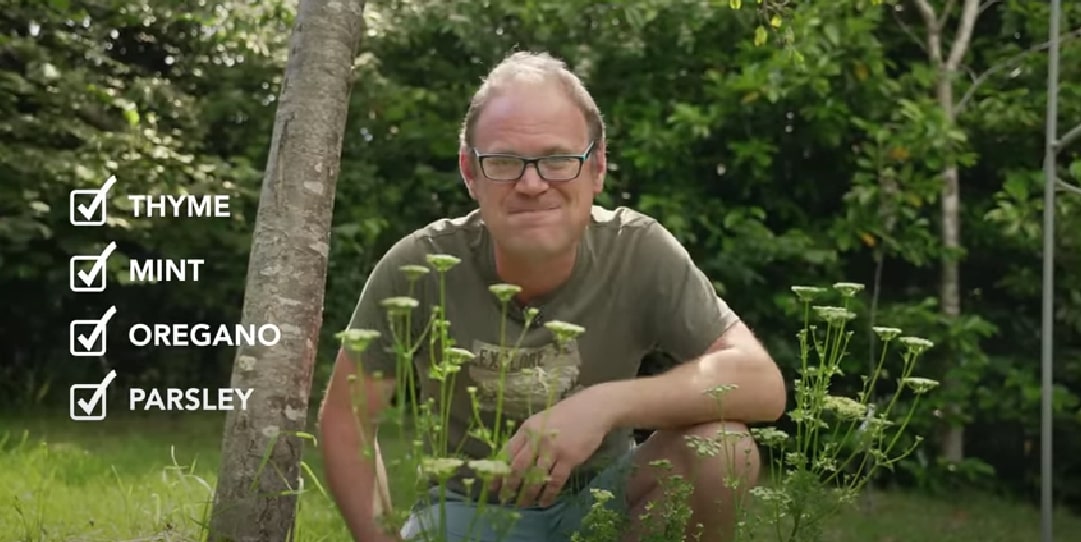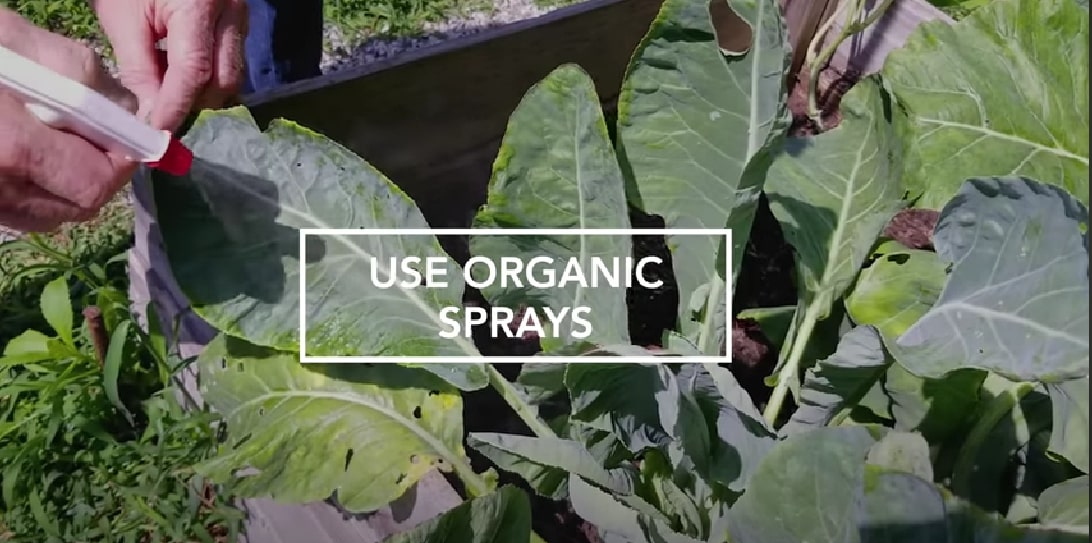Pests are an unavoidable part of gardening and you can choose to co-exist with them or do something about the whole situation.
Benedict Vanheems, book author and horticulturist, shares his insights into this issue and offers advice on getting rid of pests from your garden.
His solutions are organic and eco-friendly and, best of all, they actually work!
Let’s check them out!
Cover Your Crops
The very simplest way to avoid pests in the first place is just to cover your crops from an early start, says Vanheems.
Covering your veggies before they get infested with pests can help you avoid dealing with infestations later on, whether it’s leaf miner flies on your beets or carrot flies on your carrots.
Benedict advises to use a fine gauge netting, also known as insect barrier mesh or netting. The material is very fine, so no insect will be able to get through it.
It’s really important, though, that you properly secure it to the side, otherwise bugs could just kind of walk in at ground level or get in under any sort of gap, warns Vanheems.
You can secure it with plenty of rocks, logs, or anything that you have available in your garden.
Fine gauge netting is a great choice because it lets sunshine and water through, allowing your veggies to develop properly. Therefore, you won’t have to remove it if you want to irrigate your crops, only when you wish to harvest the delicious fruits.
Insect mesh is my go-to cover during the growing season because it literally stops everything in its tracks, from cats through to those flying pests, adds the horticulturist.
Another benefit of this enviromesh is that it is much more durable than fleecy row covers.
You can use this material for all sorts of veggies and even shape it into a tiny greenhouse if you want your garden to look more appealing.
Use Other Covers
If squash bugs or squash vine borers are a problem where you garden, then row covers can be really useful early on in the life cycle of your squash plants, continues Vanheems.
He advises to cover your veggies as soon as you plant them in the ground and keep them that way until they establish and begin to produce flowers. At this time, you need to remove the cover to let the pollinators in and do their job, securing a large harvest for you.
And even if squash bugs and vine borers attack your plants at this stage, at least they’ll be larger and more resilient.
Vanheems also doesn’t shrink from wider gauge netting, such as bird netting, which he uses early in the season to keep pigeons off. Although, it works against any bird.
However, it won’t stop smaller insects from laying their eggs, so you might need to replace it with fine gauge netting if you experience this issue.
You’ll also find butterfly netting, which does exactly as the name implies – it keeps butterflies and moths off your plants, says Vanheems.
This cover has slightly smaller netting than the bird netting, but bigger than the insect one, which is why it needs support to be kept up off the plants. Vanheems warns that if we don’t do this, butterflies could just sit on the mesh and lay their eggs through it.
Therefore, if you don’t want to give covers much thought, you can just use insect netting, which really is an all-purpose cover.
But what about tall plants or those that need pollination? Do we cover those as well?
Let’s take beans for instance, a tall and pollination-needy crop. Benedict Vanheems also has them in his garden and he noticed some aphids crawling over the leaves.
But he says an interesting thing. The horticulturist mentions that this isn’t a cause for alarm because it won’t be long before pest predators like ladybugs or ladybirds discover them and snap them up.
Of course, those pest predators won’t appear as soon as the infestation happens, but you can buy yourself some time by snipping off some infested foliage or squash the aphids between your fingers.
Or you can use your hose to wash them away.
Vanheems also advises pinching out the tips because that’s where they tend to congregate, so it’s a good preemptive strike to avoid them in the first place.
Additionally, if pests have already caused damage to your crops, you can start by removing the decimated parts that have been worst affected. If you’re lucky, you might have unaffected new growth that will rescue your harvest.
You might also have to deal with slugs after a rainy week or early in the season. The good news is that you can lay green covers, such as large rhubarb leaves, and check them from time to time to see whether there are snails or slugs hiding underneath.
Or you can keep slugs off your plants by using aluminum foil, traps, etc.
Attract Beneficial Insects
There’s a whole host of beneficial bugs such as predatory insects that absolutely love to feed on soft-bodied pests, say Benedict Vanheems.
Ladybugs and ladybirds are only some of them. This category also includes hoverflies, lacewings, and pirate bugs.
Some of these (or all of them) are bound to be lurking in your backyard and will find the pests eventually.
However, Vanheems advises intentionally attracting them by planting flowers they like. Dill and fennel are great choices for beginners because they are easy to grow and will attract numerous predatory insects.
Actually, most herbs produce flowers that these beneficial bugs love, so make sure to create a herb garden in your backyard.
Grow Suitable Plants
If you want to attract more beneficial insects, try growing plants such as thyme, mint, oregano, and parsley.
Another benefit of these herbs is that you can add them to your dishes or brew them into delicious teas.
And then there are my favorite veggie garden flowers. So we’re talking poached eggplant or Limnanthes, marigolds, calendula, and then the sweet, sweet alyssum with their honeyed scents, adds Vanheems.
Scatter these plants throughout your vegetable garden and the beneficial bugs will quickly follow.
You should also try and attract insect-eating birds. Ensure there are plenty of trees and shrubs where they can make their nests and find shelter, and they’ll quickly inhabit your garden.
Get Ready To Spray
If you have an infestation that you are determined to get rid of, then the final solution is a spray, a natural organic spray, mentions the horticulturist.
There are many homemade organic garden sprays that deter pests, but Vanheems still warns that this should be the last option.
Any spray, even the natural one, is likely to have some sort of side effects and may impact non-target species.
You can use BT against caterpillars or you can use some broad-spectrum spray, such as Spinosad or Pyrethrin extract to tackle a wider variety of pests.
And if you prefer homemade solutions, you can simply mix 2 pints of water with 2 teaspoons of dish soap.
Spray the pests with this concoction and they’ll quickly disappear. Just make sure to target large areas of infestation and don’t spray all over your garden since dish soap isn’t the safest product for your plants.
Whatever you decide to use, please, please avoid spraying during the day when other beneficial bugs are about. Wait until the evening, till dusk, when pollinating insects and other beneficials are less likely to be about.
Vanheems finishes off by saying that you can also try growing plants outside of the main danger period for their pests if you live in a region with a longer growing season.
And in this video here, you can find more detailed information about getting rid of pests from your garden:

